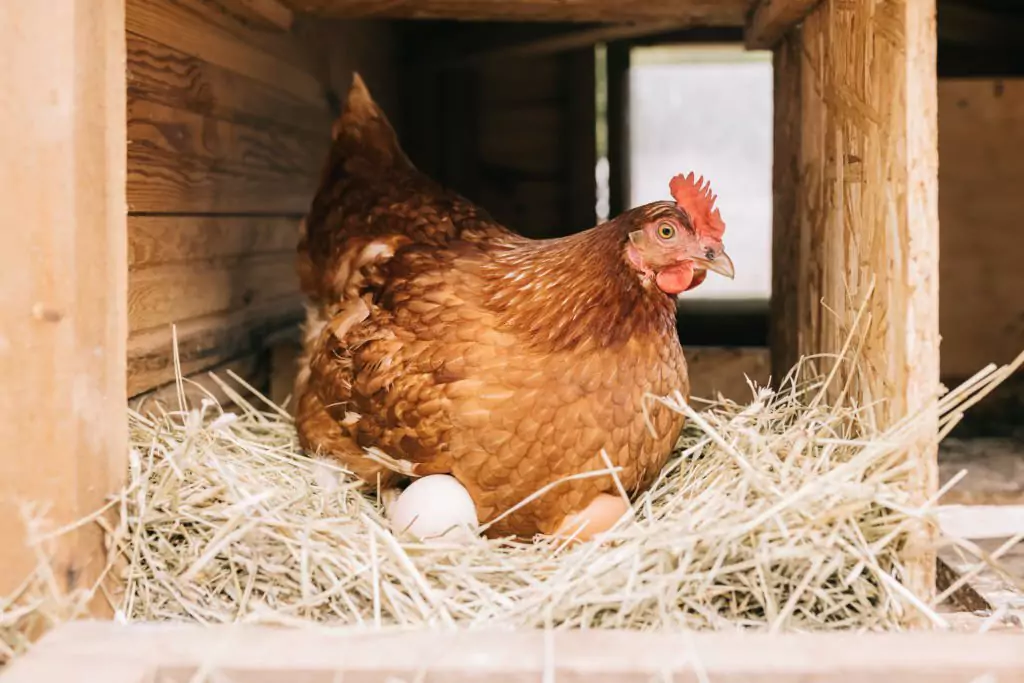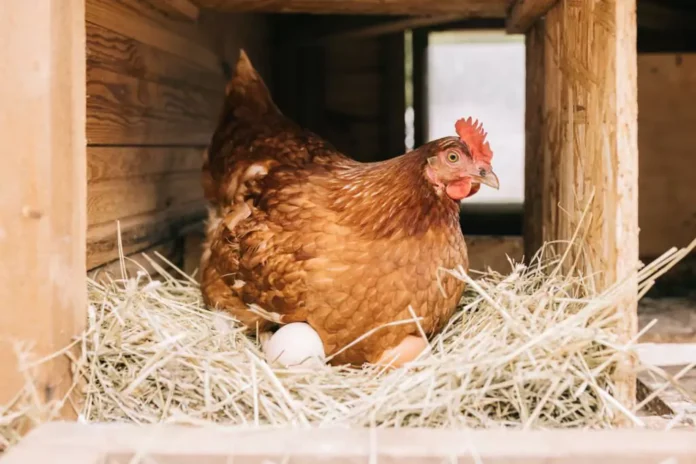Introduction to chicken egg production
Chicken egg production has a long and rich history that dates back thousands of years. The domestication of chickens for egg production can be traced back to ancient civilizations such as the Egyptians and Romans. These early civilizations recognized the value of chicken eggs as a source of food and began selectively breeding chickens to increase their egg-laying capabilities.
Today, chicken egg production plays a crucial role in both agriculture and the food industry. Eggs are a staple in many diets around the world and are used in a wide variety of culinary applications. Additionally, eggs are a valuable source of protein and other essential nutrients, making them an important part of a balanced diet.

Factors that influence chicken egg laying
Several factors can influence the egg-laying capabilities of chickens. These factors include genetics and breed, nutrition and diet, lighting and temperature, and stress and environment.
Genetics and breed play a significant role in determining a chicken’s egg-laying capabilities. Certain breeds, such as Leghorns, have been selectively bred for their high egg production. These breeds are known for their ability to lay a large number of eggs consistently. On the other hand, some heritage breeds may not lay as many eggs but are valued for other characteristics such as meat quality or unique appearance.
Nutrition and diet also play a crucial role in egg production. Chickens require a balanced diet that includes the right combination of protein, carbohydrates, fats, vitamins, and minerals. A lack of essential nutrients can lead to decreased egg production or poor egg quality. It is important to provide chickens with a high-quality feed that meets their nutritional needs.
Lighting and temperature are also important factors in egg production. Chickens require a certain amount of light each day to stimulate egg production. The ideal lighting conditions for egg-laying chickens include 14-16 hours of light per day. Additionally, temperature can affect egg production, with extreme heat or cold leading to decreased egg production.
Stress and environment can also impact a chicken’s ability to lay eggs. Chickens that are exposed to stressful conditions, such as overcrowding or predator threats, may experience a decrease in egg production. Providing a comfortable and stress-free environment for chickens is essential for optimal egg production.
Average number of eggs laid by a chicken per day
The average number of eggs laid by a chicken per day can vary depending on several factors. On average, a healthy laying hen can produce anywhere from 4 to 7 eggs per week, or approximately 0.5 to 1 egg per day. However, it is important to note that this is just an average, and individual chickens may lay more or fewer eggs.
Several factors can affect the number of eggs laid by a chicken. These factors include breed, age, nutrition, lighting, and environmental conditions. Certain breeds, such as Leghorns, are known for their high egg production and may lay closer to 6 or 7 eggs per week. On the other hand, some heritage breeds may lay fewer eggs, averaging around 4 or 5 per week.
Age is another important factor in egg production. Young hens typically start laying eggs around 5 to 6 months of age and reach peak production at around 1 year of age. As hens age, their egg production may decrease gradually. By the time a hen reaches 3 to 4 years of age, her egg production may decline significantly.
Differences in egg production between breeds of chickens
There are significant differences in egg production between different breeds of chickens. Some breeds are known for their high egg production, while others may lay fewer eggs but have other desirable characteristics.
Leghorns are one of the most popular breeds for egg production. They are known for their high egg-laying capabilities and can produce up to 280-320 eggs per year. Leghorns are small, active birds that are efficient at converting feed into eggs.
Rhode Island Reds are another breed that is valued for their egg-laying abilities. They are known for their hardiness and can produce around 200-300 eggs per year. Rhode Island Reds are also dual-purpose birds, meaning they can be used for both egg and meat production.
Other popular breeds for egg production include Sussex, Plymouth Rocks, and Australorps. These breeds are known for their ability to lay a good number of eggs while also being suitable for meat production.
How age affects chicken egg laying
Age plays a significant role in chicken egg laying. Young hens typically start laying eggs around 5 to 6 months of age. At this point, their reproductive systems have matured enough to begin producing eggs. However, it is important to note that not all hens will start laying at the same age. Some may start laying as early as 4 months, while others may not start until 7 or 8 months.
As hens age, their egg production may decrease gradually. This decline in egg production is a natural part of the aging process and is influenced by factors such as genetics and breed. Hens typically reach peak production at around 1 year of age and may continue to lay consistently for the next 2 to 3 years. After this point, their egg production may decline, and they may lay fewer eggs or stop laying altogether.
It is important to note that there are exceptions to this general timeline. Some hens may continue to lay consistently well into their later years, while others may experience a more rapid decline in egg production. Providing proper care and nutrition can help prolong a hen’s productive years and ensure optimal egg production.
Seasonal variations in chicken egg production
Seasonal variations can have a significant impact on chicken egg production. The length of daylight hours is a key factor that influences a chicken’s reproductive cycle and egg-laying capabilities.
Chickens are sensitive to changes in daylight hours, and their reproductive systems are influenced by the amount of light they receive. As the days get shorter in the fall and winter months, chickens naturally go into a period of reduced egg production or may stop laying altogether. This is known as the molting season, and it is a time when chickens shed their old feathers and grow new ones.
As the days start to lengthen in the spring, chickens will begin to increase their egg production. This is because the longer daylight hours stimulate their reproductive systems. Chickens typically reach peak egg production during the spring and summer months when daylight hours are the longest.
Tips for maximizing chicken egg production
There are several tips and strategies that can help maximize chicken egg production. These include providing proper nutrition and diet, optimal lighting and temperature, and reducing stress and providing a comfortable environment.
Proper nutrition is essential for optimal egg production. Chickens require a balanced diet that includes the right combination of protein, carbohydrates, fats, vitamins, and minerals. A high-quality layer feed that is specifically formulated for egg-laying hens should be provided. Additionally, offering supplemental calcium in the form of crushed oyster shells can help ensure strong eggshells.
Lighting and temperature also play a crucial role in egg production. Chickens require a certain amount of light each day to stimulate egg production. Providing 14-16 hours of light per day can help maximize egg production. Additionally, maintaining a comfortable temperature range of around 65-75 degrees Fahrenheit is important for optimal egg production.
Reducing stress and providing a comfortable environment for chickens is also essential for maximizing egg production. Overcrowding, predator threats, and other stressful conditions can negatively impact a chicken’s ability to lay eggs. Providing ample space, clean bedding, and access to fresh water and food can help reduce stress and promote optimal egg production.
Conclusion and final thoughts on chicken egg laying
Chicken egg production is a vital part of agriculture and the food industry. The domestication of chickens for egg production has a long history, and today, eggs are a staple in many diets around the world.
Several factors influence chicken egg laying, including genetics, nutrition, lighting, and environmental conditions. Different breeds of chickens have varying egg-laying capabilities, with some breeds known for their high egg production. Age and seasonal variations also play a role in egg production, with hens typically reaching peak production at around 1 year of age and laying more eggs during the spring and summer months.
Maximizing egg production requires providing proper nutrition, optimal lighting and temperature, and reducing stress. By taking these factors into consideration and providing proper care and management, chicken owners can ensure optimal egg production and enjoy the benefits of fresh, nutritious eggs.


